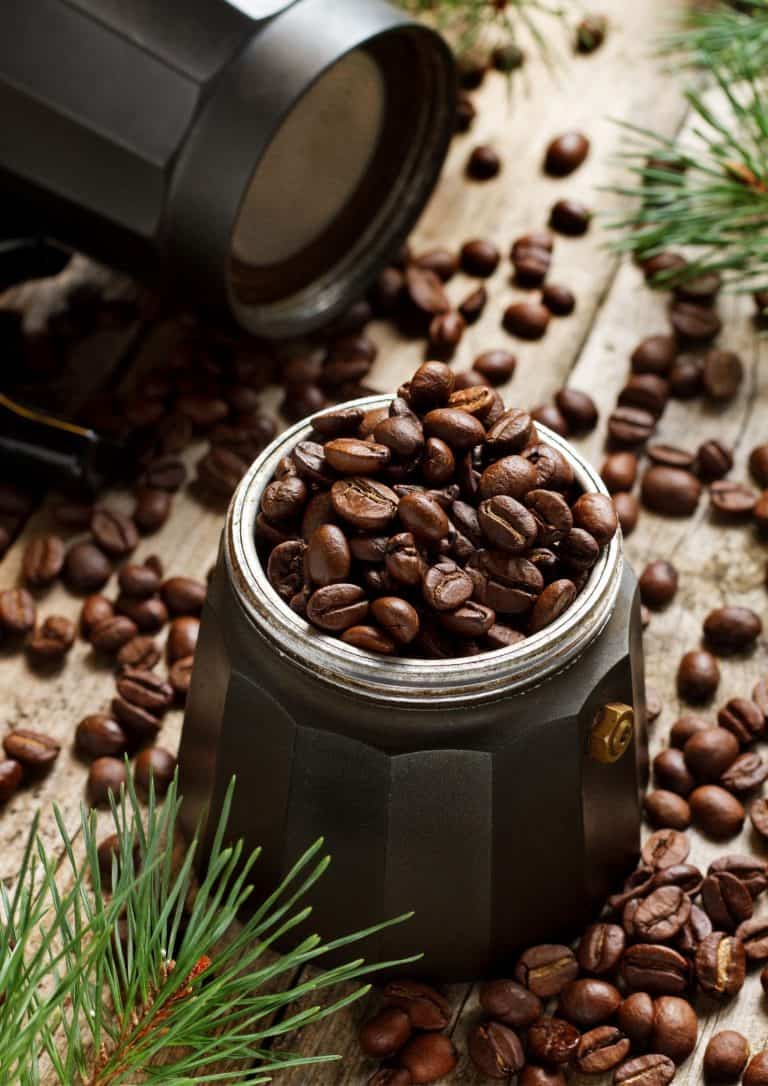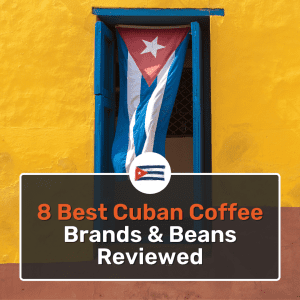- The 10 Best Espresso Beans
- The 10 Best Espresso Beans Reviewed
- Illy Ground Espresso Intenso Coffee Dark Roast
- Koa Grande Domaine Vienna Roast
- Lifeboost Espresso Organic Coffee
- Volcanica Sumatra Mandheling Reserve
- Volcanica Guatemala Antigua Coffee
- All Day Gourmet Fresh Roasted Espresso Italiano
- Roaring Panther Dark Roast Espresso
- Illy Ground Moka Classico Coffee Medium Roast
- Lion Rich and Zesty Cafe Honolulu Coffee
- Volcanica Espresso Dark Roast Decaf Coffee
- What Are Espresso Beans?
- Buying Guide To Pick The Best Espresso Beans
- Tips For Better Espresso
- The Verdict

There are many espresso coffee bean options for your espresso maker, but it can be challenging to know which ones have the best flavor. Not all regular coffee beans work well for espresso without being bitter, especially if they’re a darker roast.
When you’re looking for a good espresso bean, the flavor profile, origin, bean type, roast, and grind all matter. If you know what makes a good bean for espresso, it’s easier to weed out the ones that won’t end up having a well-rounded and rich coffee flavor.
After testing several options, it was clear that Illy Ground Espresso Intenso Coffee Dark Roast is the best espresso bean blend available.
I was looking for espresso bean brands with a 100% Arabica bean blend. It needed to be a dark or medium-dark roast coffee. It also needed to have a rich flavor while being smooth without any bitterness. Illy was the best of all the espressos.
I found that I was constantly comparing every other brand to Illy Espresso Intenso. Its rich body chocolate notes add to the intensity and boldness that I look for in full-bodied espresso. Illy also goes down smoothly without any bitter aftertaste.
Of course, different espressos suit different tastes and even different moods. I like to have a variety of espressos on hand because I’m not the type of person who wants the exact same flavor every day.
There are certainly plenty of espressos to try. Some are more exotic, smoky, sweeter, or lighter in taste. Or maybe you’re looking for fair trade coffee, something to appeal more to American tastes, a decaf for evening espressos, or a blend for your Moka pot.
Keep reading for the rest of our espresso bean reviews, our top pick, and how to choose and brew the best espressos.
The 10 Best Espresso Beans
| Product | Features | Features | Price |
|---|---|---|---|
Best Overall  | Illy Ground Espresso Intenso Coffee Dark Roast
| 9.7 | Check On IllyCheck On 1stInCoffee |
Best For Kona Lovers  | Koa Grande Domaine Vienna Roast
| 9.5 | Check On Koa Coffee |
Best Fairtrade  | Lifeboost Espresso Organic Coffee
| 9.1 | Check On Lifeboost |
Best For Exotic Tastes 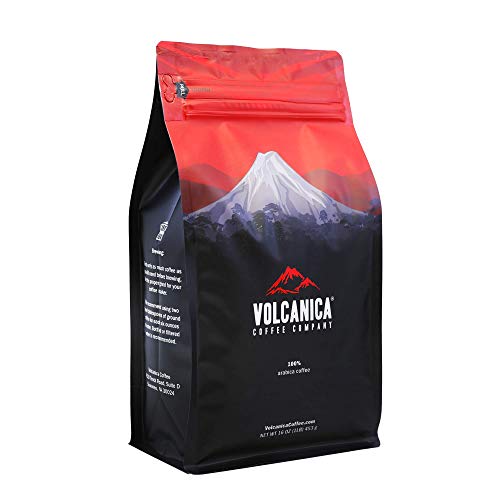 | Volcanica Sumatra Mandheling Reserve
| 8.8 | Check On VolcanicaCheck On Amazon |
Best For Smoky And Earthy Flavors  | Volcanica Guatemala Antigua Coffee
| 8.6 | Check On VolcanicaCheck On Amazon |
Best For American Palates 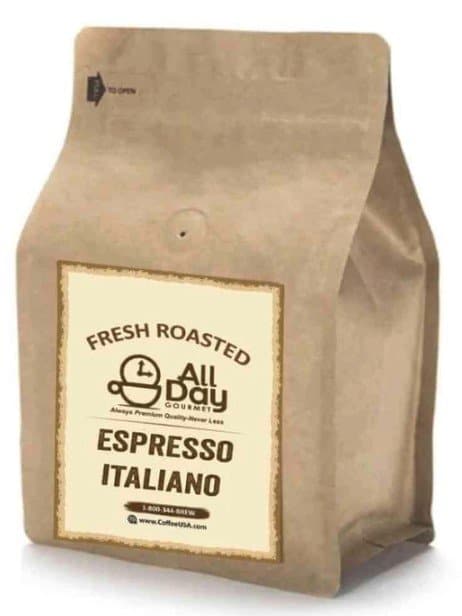 | All Day Gourmet Fresh Roasted Espresso Italiano
| 8.2 | Check On Coffee.org |
Best For Supporting Native American Roasters 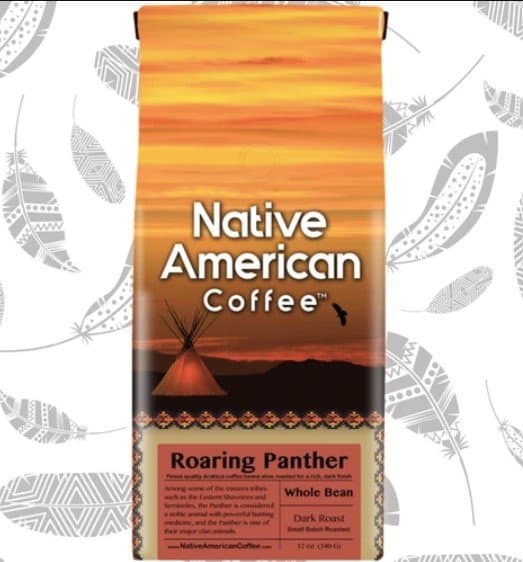 | Roaring Panther Dark Roast Espresso
| 8 | Check On Coffee.org |
Best For Moka Pot Users  | Illy Ground Moka Classico Coffee Medium Roast
| 7.7 | Check On IllyCheck On Amazon |
Best Lighter Roast 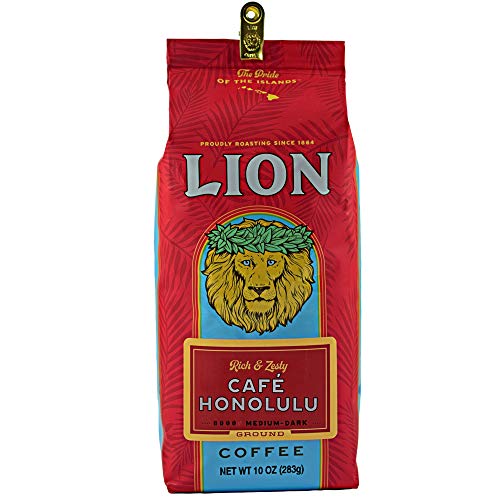 | Lion Rich and Zesty Cafe Honolulu Coffee
| 7.4 | Check On Hawaii Coffee Co.Check On Amazon |
Best Decaf  | Volcanica Espresso Dark Roast Decaf Coffee
| 7.2 | Check On VolcanicaCheck On Amazon |
The 10 Best Espresso Beans Reviewed
We’ve found the ten best espresso beans for our espresso bean reviews. Whether you’re looking for classic European-style espresso coffee beans, something with a dark chocolate flavor, or a rich coffee flavor, we’ve got you covered.
The best espresso beans come in a variety of espresso roast levels, from medium to dark roast. Our best espresso beans reviews cover a variety of bean types.
The best espresso coffee beans may vary in flavor, but they are all supreme in taste in the coffee world.
Illy Ground Espresso Intenso Coffee Dark Roast
- Flavor: Intense, robust, and full-flavored with notes of deep cocoa
- Origin: Composed of 9 of the finest Arabica coffee sources worldwide
- Bean: 100% arabica
- Roast: Dark roast
- Grind: Finely ground
- Hold the title of the worlds most ethical coffee
- Packed in an air-free, pressurized can that enhances and seals in aromas and oils
I first heard of Illy from my friend who lived in France and swore by it. European-style coffee connoisseurs will enjoy Illy’s bold and rich espresso flavor. I’ve tried their Espresso Classico, too, but I always come back to their Intenso flavor as my favorite.
Illy’s coffee roasters use a blend of nine different Arabica coffee beans from around the world to make their Espresso Intenso. The resulting blend has a bold flavor but remains smooth and is never bitter. Their delicious coffee makes others pale in comparison.
Even though the beans are pre-ground, they come in an air-tight, pressurized metal can that enhances the flavors and keeps the espresso tasting fresh cup after cup.
I also like Illy’s dedication to only using ethically sourced coffee. As of 2021, they’ve been on Ethisphere’s ethical coffee list for nine years in a row.
Koa Grande Domaine Vienna Roast
- Flavor: Buttery, a hint of coconut, sweet, rich, balanced, full-bodied
- Origin: Hawaii, single estate
- Bean: 100% Arabica, Peaberry Kona + Kona coffee
- Roast: Medium-dark Vienna roast
- Grind: Whole coffee bean
Whether you’re a Kona coffee lover or want to try the sweet, rich flavor for the first time, you’re going to love making espresso with Grand Domaine.
Their delicious coffee blend includes Kona beans from the Mauna Loa region of Hawaii, plus a smattering of the rarest Kona–Peaberry Kona. Grand Domaine is buttery, sweet, rich, and balanced without any hint of bitterness.
Grand Domaine will absolutely spoil you so that you may never want to drink another type of espresso again. Konas are a little more pricey, but they’re worth every cent. They’re great not only as an espresso but also in a French press or cold brew to bring out their flavors.
Lifeboost Espresso Organic Coffee
- Flavor: Dark chocolate, caramel, slight fruitiness, sweet, balanced, low acid
- Origin: Nicaragua, single-origin
- Bean: 100% Arabica
- Roast: Dark roast
- Grind: Whole coffee beans or espresso grind
If you’re looking for fair-trade Arabica beans that are non-GMO and certified organic, you’ll want to try Lifeboost. Their espresso has a milk chocolate and caramel taste with hints of dried fruits. It makes an extremely well-balanced cup of espresso with a strong coffee flavor.
All the beans in this dark roast blend come from shaded Nicaraguan mountain farms. The farmers handpick the beans, wash them in spring water, dry them in the sun, and then hand-roast them to perfection.
Lifeboost Espresso’s organic fair trade coffee from Latin America is also great if you need a low-acid coffee that’s easier on the teeth and stomach.
Volcanica Sumatra Mandheling Reserve
- Flavor: Rich flavor, full-bodied, and vibrant with low acidity, features a smooth chocolate flavor with earthy undertones.
- Origin: Indonesia, single-origin
- Bean: 100% Arabica
- Roast: Dark roast
- Grind: Whole bean, espresso grind, drip grind, or french press grind
- Fairtrade certified, Rain Forest Alliance, and certified shade-grown
Lovers of exotic coffees absolutely delight in Sumatra Mandheling Reserve coffee. It’s a rare Indonesian coffee with complex layers of flavor ranging from earthy to brown sugar and dried fruit. It also has a syrupy and winey aftertaste.
It’s one of the cleanest and consistent brews I’ve tried in a strong coffee with no bitter or sour aftertaste. It’s also low on acidity. So, if you’ve wanted to try a Sumatran coffee, this is a good starter.
One thing to note about Volcanica Coffee is that they roast small batches of their beans weekly and ship out within one business day of your order, so you’re going to get a really fresh flavor from their quality beans.
Volcanica Guatemala Antigua Coffee
- Flavor: Smooth, rich flavor, full-bodied, and an intense aroma. Flavor tones of honey, apple, tea, and floral brown sugar, with subtle smoky-spicy overtones
- Origin: Guatemala, single-origin from the Medina Estate
- Bean: 100% Arabica
- Roast: Dark roast
- Grind: Whole bean or espresso grind
- Rainforest Alliance certified
Smoky and earthy flavors aren’t flavors you often think about for espresso, but they can make for an intriguing and sophisticated drink. Guatemala Antigua Coffee is a single-origin coffee made in small batches on the Medina Estate in Guatemala.
This coffee from Latin America offers a very distinctive flavor in a dark roast. The combination of deep caramel with rich earthy and smoky flavors makes it a quality coffee that you won’t soon forget.
It has a profoundly intense flavor while also being extremely smooth with low acidity, making it seem like a milder roast than other over-roasted dark roasts.
All Day Gourmet Fresh Roasted Espresso Italiano
- Flavor: Tangy red fruit, rich, bold, smooth
- Origin: An artisanal blend of single-origin coffees
- Bean: 100% Arabica
- Roast: Medium-dark roast
- Grind: Whole bean or espresso grind
When you think of Italian roast espresso, there’s no need to assume that they’re going to be bitter. All Day Espresso uses an Americanized medium-dark roast to cater Italian espresso to Americans’ espresso taste palate.
All Day Espresso’s secret is to use an artisanal mix of several single-origin quality coffees to make the perfect smooth espresso blend. The resulting espresso has an ideal tang and rich smoothness with no bitterness.
If you like the tangy, rich taste of their caffeinated espresso, you also might enjoy their decaf version, which has the same great taste.
Roaring Panther Dark Roast Espresso
- Flavor: Smoky, bold, dark
- Origin: Africa and South America
- Bean: 100% Arabica
- Roast: Dark roast
- Grind: Whole bean or espresso grind
Among present-day Native Americans, coffee is the drink of choice for social gatherings. Trying a Native American-owned espresso can help improve and enhance the lives of Native Americans.
While Native American Coffee is a coffee roasting company on the Oklahoma and Arkansas border, their dark roast blend is a secret mix from Africa and South America.
The company’s Native American roasters slow roast their espresso blend, which gives their roasted espresso beans a rich, dark finish. They have a smoky, bold flavor that tastes nice alone or with milk.
Illy Ground Moka Classico Coffee Medium Roast
- Flavor: Dark chocolate, caramel, rich, smooth
- Origin: A signature blend of the best quality coffee beans from around the world
- Bean: 100% Arabica
- Roast: Medium roast
- Grind: Moka pot grind
If you ever visit an Italian kitchen, you’re far more likely to see a stovetop espresso maker (or Moka pot) in the kitchen than espresso machines. After the first time I had espresso from a Moka pot, my kitchen can’t be without one either. The Italian espresso flavor is divine.
I make a lot of coffee in a Moka pot, but it wasn’t until recently that I discovered that Illy has a special stovetop espresso blend. Now, it’s all I want to use. If you make your espresso with a Moka pot, you owe it to yourself to give it a try.
Moka pots are fine for medium or dark roasts, and Illy’s Moka Classico is a medium roasted espresso. It uses a signature blend of the best coffee beans, which go together perfectly for stovetop espresso.
Its medium roast and slightly coarser grind make for Moka pot perfection. It also tastes nice in a French press.
Lion Rich and Zesty Cafe Honolulu Coffee
- Flavor: Complex, smooth, full-bodied
- Origin: Honolulu, Hawaii
- Bean: 100% Arabica, Kona
- Roast: Medium-dark roast
- Grind: Whole Bean
Lion Coffee has been around as coffee roasters since 1864. They moved to a local coffee shop and grindery in Honolulu, Hawaii, in 1979. Cafe Honolulu coffee features in many people’s island memories and is the type of coffee you try once and then keep ordering the rest of your life.
Lion’s Caffe Honolulu coffee can bring a little piece of Hawaii to your morning shot. Caffe Honolulu is also great for drip coffee.
Lion has several types of Kona coffee beans available, but this one is more in the European cafe style and works best for espresso. Its medium-dark flavor is a great option for people who prefer lighter flavors. Its complex and full-bodied flavor is super smooth with no bitter aftertaste.
Volcanica Espresso Dark Roast Decaf Coffee
- Flavor: Perfectly balanced, caramel sweetness, intense, light acidity, spicy aroma
- Origin: Volcanic soil in the mountains 3000+ feet above sea level
- Bean: 100% Arabica
- Roast: Dark roast
- Grind: Whole bean, espresso grind, drip grind, or french press grind
- Decaffeination by the Swiss Water Process: 100% chemical-free process that delivers coffee that is 99.9% caffeine-free while protecting the beans unique characteristics
You never have to worry about it being past espresso-drinking hour if you have quality decaf espresso. This is one of my favorite decaf beans for espresso because of its caramel sweetness.
Volcanica doesn’t disclose exactly where they get their quality beans for their decaf espresso roast, but they come from volcanic soil in the mountains at least 3000 feet above sea level.
Volcanica uses a 100% chemical-free Swiss Water Process to remove 99.9% of the caffeine from their quality beans. This process helps the beans keep their unique flavor for a better decaf coffee than many other espresso bean brands.
What Are Espresso Beans?
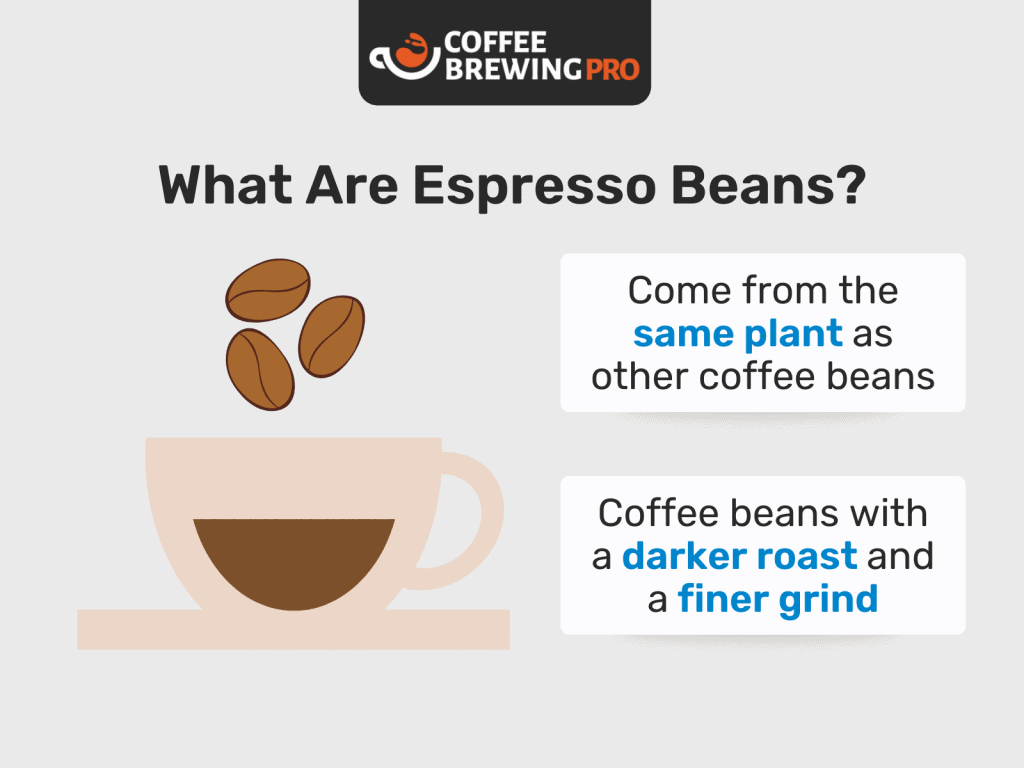
It’s not that espresso beans come from a completely different type of plant than other types of beans. Sure, there are certain types of beans that taste better as an espresso bean, but you can use the same bean for a good cup of coffee as well as a good cup of espresso.
So, what are espresso beans? Espresso coffee beans are coffee beans with a darker roast and a finer grind that you can use to brew in an espresso machine.
You might use the same dark roasted beans for coffee that you use for espresso. However, if you use an espresso-ground coffee bean in a non-espresso machine, you’re likely to end up clogging the machine or having some water overflow issues.
Do You Need Special Beans For Espresso?
While you could use any coffee beans for espresso, not all regular coffee beans make the best cup of espresso.
Some coffee roasters sell special espresso beans and espresso blends with espresso in mind. These blends usually have a darker roast and feature beans that taste especially good for espresso. If they are pre-ground, the grind will be fine.
What Beans Are Best For Espresso?

- Origin: Some people choose single-origin beans, while others choose a special espresso-friendly blend.
- Roast: The best beans for espresso have a medium-dark to dark roast.
- Type: Some choose an Arabica bean for its sweetness and smoothness. However, others choose Robusta for its rich and velvety crema finish.
- Grind: Espresso machines and Aeropresses need a fine grind, while Moka pots need a medium or medium-fine grind.
Buying Guide To Pick The Best Espresso Beans
Before deciding which espresso beans you want to purchase, it’s important to understand a little bit about what might make certain beans taste better for espresso.
Because espresso taste is subjective, you should understand how bean origin, roast, bean type, grinding, and different flavors might affect your personal preferences. However, you will also need to look for beans with the best extraction for espresso brewing methods.
The extraction process involves pouring water through coffee grounds to bring all of the flavors and goodness into your brew. For espresso, the amount of water to coffee, the size of the grind, and the coffee roast level all affect extraction and coffee flavor.
Bean Origin For Your Espresso Blend

An espresso bean’s growing origin influences its flavor profile. Where do the best espresso beans come from? Would you prefer Brazilian coffee or Ethiopian coffee? The origin is a matter of personal preference.
The Americas
Beans from the Americas are smooth, sweet, crisp, clean, balanced, and have bright acidity:
- Hawaii: creamy, smooth, chocolate notes, fruity, medium body, low acid
- Mexico: fruity, spicy, light-medium body, balanced acidity
- Costa Rica: mild, clean, bright
- Guatemala: honey, aromatic, smooth, winey acidity
- Nicaragua: hazelnut, meaty, full body
- Colombia: sweet, rich, caramelly, smooth, mellow acidity
- Peru: sweet, soft, bright, effervescent, medium body
- Brazil: nutty, buttery, bittersweet chocolate notes, heavy body, low acid
The Caribbean
Beans from the Caribbean are smoky, rich, smooth, balanced, and have mild acidity:
- Jamaica: rich body, mellow, balanced flavor
Africa
Beans from Africa are fruity, bright, fragrant, floral, and vibrant:
- Ethiopia: light, tart citrus, fruity, bright acidity
- Kenya: citrus, berry, bright, vibrant, intense acidity
- Tanzania: intense citrus, bright, vibrant, medium body
Asia
Beans from Asia are earth, musty, smooth, full-body, and have mild acidity:
- Yemen: earthy, complex flavor, pungent
- India: creamy, mild, smooth, full-body, low acid
- Sumatra: syrupy, chocolatey, rich, smooth, full body
- Sulawesi: earthy, full-body, low acid
- Java: rich, heavy body, low acid
Single-Origin vs Blend
Are single-origin or blended origin beans better for espresso? Like so many things related to coffee beans, it’s a matter of personal taste.
- Single-origin beans: Beans from a single location can be seasonal, so you may not always be able to find them year-round. They’re also inconsistent in flavor, based on when they’re harvested or processed.
- Blended beans: Blends include coffee from multiple origins to create a more balanced and consistent flavor. Espresso roasters pair complementary flavors with each other for more complex flavor profiles and to balance out any flavor defects.
Roast Type

The roasting process provides one of the most important differences in coffee flavor, and which brewing method will taste best with the bean.
What roast types are best for espresso?
In my opinion, the best espressos are made from medium-dark and dark roasted beans. However, a medium roast blend can also work for Moka pot espresso.
Light espresso roasts work best with a slower extraction process like for a drip coffee maker. On the other hand, darker roasts work better with a faster extraction process like espresso. Darker roasts extract more easily because their cellulose structure is more porous, and they are more water-soluble.
Espresso machines generally only take 20-30 seconds to move water through espresso grounds, so it’s important to use a darker espresso roast that extracts quickly to achieve a full-flavored brew.
Medium-Dark Roast
A medium-dark roast coffee has a darker brown color and an oilier surface than a light roast or medium roast coffee. Features of a medium-dark roast include:
- Less acidity than medium roast and light roast
- A bolder, richer flavor than medium roast and light roasts
- Smoother and less bitter than dark roasts
Some common names you might see to describe a medium-dark roast include:
- Medium-dark
- Light espresso
- Viennese
- Continental
- Full city
- After dinner
- Light French roast
Dark Roast
A dark-roast coffee is the darkest coffee bean of all, reaching nearly black. Dark roast beans have the longest roasting time of any coffee roast. The long roasting time brings even more oils to the bean’s surface, which you may see in your cup of espresso.
A longer roasting time breaks down the cellulose walls of the coffee bean more, so it has a faster extraction time than lighter roasts.
Features of a dark roast include:
- Less acidity
- Richer flavor
- Double the flavor strength of the average cup of coffee
- Faster extraction
- More bitter (try a coarser grind for more smoothness)
Some names you’ll see for dark roasts include:
- Dark roast
- Dark
- Espresso
- French roast
- Dark French
- Italian
- Spanish
- Turkish
- European
- New Orleans
- Neapolitan
- High
- Heavy
Arabica vs Robusta
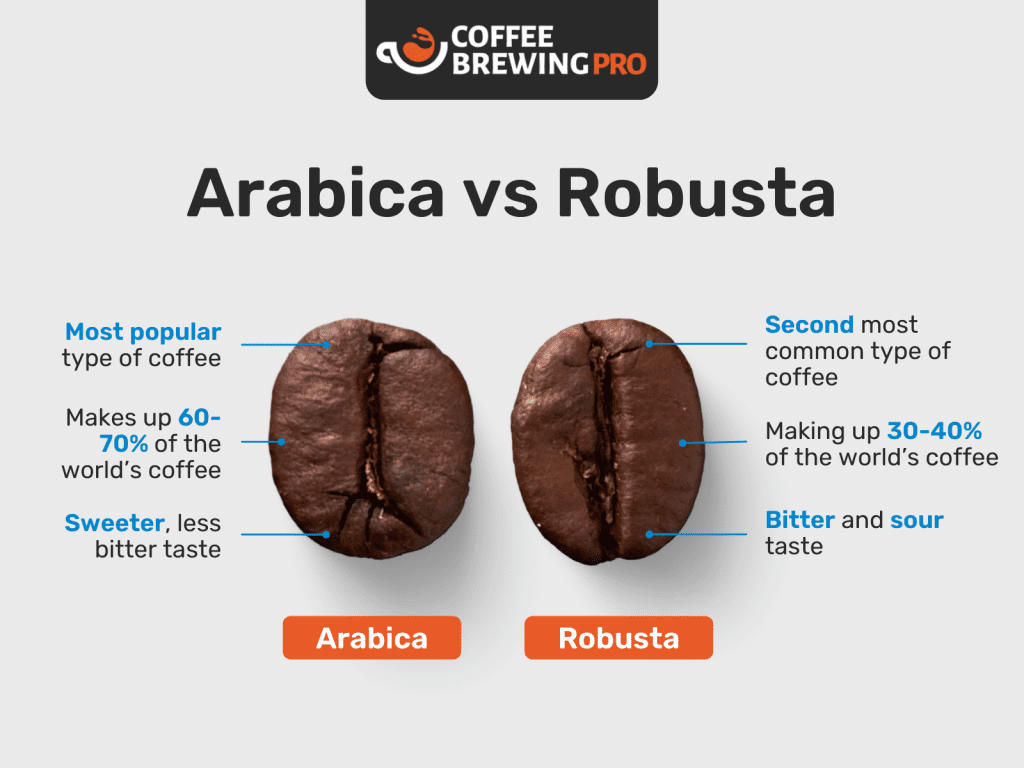
While there are four different types of coffee beans, but Arabica and Robusta are the most common espresso beans:
- Arabica (Coffea Arabica): Arabica dates back to Ethiopia in 1000 B.C. It’s the most popular type of coffee and makes up 60-70% of the world’s coffee. Because it has a sweeter, less bitter flavor, many people prefer it to Robusta.
- Robusta (Coffea Canephora): Robusta is the second most common type of coffee, making up 30-40% of the world’s coffee. Because it’s more bitter and sometimes even compared in taste to burnt rubber, it’s not nearly as popular as Arabica.
When it comes to choosing between Arabica and Robusta beans, it’s no contest for me. I’ll choose a blend of Arabica every time. Americans have a history of distaste for Robustas. A lot of instant coffee uses Robusta as the base, and instant coffee isn’t very popular with Americans.
Arabica vs Robusta Taste
- Arabica flavor: Arabica coffees have a smoother and sweeter taste with flavors that may include chocolate, fruits, or berries.
- Robusta flavor: Robusta coffees have a hasher and more bitter taste with flavor notes that tend toward being more earthy and nutty or rubbery.
Arabica vs Robusta Crema
When you brew Robusta in an espresso machine, it produces a thick crema. The crema is the foam on top of espresso that comes from emulsified coffee bean oils. This crema is why Italian roast espresso blends tend to use Robusta beans rather than Arabica beans.
If you’re looking for a Robusta with a thick crema, you will want to try Lavazza Super Crema.
Foodies worldwide suggest removing the crema from the top of your espresso to eliminate bitterness and give your espresso a sweeter flavor. Thus, if you’re not a fan of bitterness in coffee, you’ll probably want to start with an Arabica rather than a Robusta espresso.
Arabica vs Robusta Caffeine Content
- Arabica caffeine content: Arabica beans have less caffeine at 1.5%.
- Robusta caffeine content: At 2.7% caffeine, Robusta beans have more caffeine content than Arabica beans. Sometimes, companies add a little Robusta to a coffee blend for more caffeine content.
Arabica vs Robusta Sugar Content
Arabica beans have twice as much sugar content as Robusta beans. Arabica coffee’s higher sugar level contributes to:
- Better smell: Aromatic compounds during roasting create a better smell.
- Richer body: More dissolved solubles gives it a richer taste.
- Browning and caramelization: The Maillard reaction occurs when the sugars and amino acids exceed 356°F during the roasting process. Higher sugar content results in better browning and caramelization.
Whole Espresso Coffee Beans vs Pre-Ground Espresso Coffee Beans

Are whole beans or pre-ground beans the best coffee beans?
Buying whole bean coffee or pre-ground coffee is a debate that will not soon come to a definitive end.
Those who prefer to grind their own beans from whole bean coffee will tell you they taste fresher and better. On the other hand, those who buy pre-ground beans usually do so for convenience.
I can be as snooty about my quality coffee beans as the next person. But, I honestly keep both whole bean coffee and pre-ground beans on hand to suit my mood.
The Case For Whole Beans
- Fresher flavor quality: Freshly-ground coffee beans start to oxidize and decline in flavor 30 minutes after grinding. Vacuum-sealed whole beans stay fresh 6-9 months, while vacuum-sealed pre-ground coffee only stays fresh 3-5 months.
- Being able to adjust for your espresso machine: Most pre-ground espresso beans work best with a standard espresso machine. However, if you make your espresso with an Aeropress or Moka pot, you will need a different grind.
- Being able to make espresso less sour or less bitter: Grinding your own beans from whole bean coffee also allows you to adjust the grind if the coffee tastes too bitter (try a courser grind) or too sour (try a finer grind).
The Case For Pre-Ground Beans
- Saving time and steps: Of course, it doesn’t take a lot of time to grind beans–mere seconds, actually. However, sometimes you don’t want to be bothered to pull out your grinder, use it, clean it, and put it back in the cupboard again.
- Because your grinder doesn’t grind finely: If you’re buying pre-ground beans because your grinder is too basic, it might be time to buy a fancier grinder.
- So you don’t have to experiment with grind settings: Selling pre-ground beans allows a company to grind their beans to the fineness level that will produce the best flavor.
Flavor Profiles
Every bag of espresso beans will have a unique flavor. Flavors can range from chocolatey to fruity, nutty, spicy, floral, smoky, or earthy–and everything in between. Beans also vary in body, smoothness, acidity, and roast level.
Most espresso bean labels will list the flavor notes so that you know what to expect.
Several things affect a bean’s flavor profile:
- Origin: Choose a single-origin bean based on its region’s flavor notes, or choose an espresso blend for balanced flavor consistency
- Bean type: Arabica beans taste sweeter and richer, while Robusta beans taste more bitter
- Roasting level: The darker the roast, the richer the flavor.
- Grinding: The more freshly ground beans are, the less flavor they lose.
- Body: The fuller the body, the richer the flavor
- Smoothness: Some beans taste smooth while others taste more bitter
- Acidity: Nine different coffee acids contribute to a bean’s unique flavor.
Tips For Better Espresso
It’s not just the espresso beans that you choose that influences espresso shot taste. If you want better espresso, sometimes it’s about what you do to the beans after you buy them. Knowing what grind size to use, how to tamp, and how to pre-infuse can also result in a better cup of joe.
Grind Size For Coffee Beans

What grind should I use for espresso?
You’ll want to use a fine grind for an espresso machine or Aeropress and a medium to medium-fine grind for a Moka pot coffee maker.
Grind size is extremely important for espresso. Because the brew time is only 20-30 seconds, it’s important that as much water as possible has access to the surface of the coffee grounds for the ideal amount of time.
When you grind coffee beans finer, more surface area is exposed, thus allowing for the most flavor to pass into the brew.
More finely ground coffee gives you:
- Larger surface area– a finer grind increases surface area
- Higher extraction rate– needs a shorter brew time for maximum flavor
- Lower flow rate– slows down how quickly the water flows through the grind
- Increased contact time– increases how long the water contacts coffee particles
You might be tempted to grind even finer to get a better brew. However, grinding too fine leads to over-extraction and a brew that is too bitter and might clog your machine.
On the other hand, if your grind is too coarse, the water won’t contact as much coffee surface area for a long enough time, so you’ll end up with a brew that is too weak and possibly sour.
If you have your own coffee grinder, it’s worthwhile to experiment with how finely you grind a new espresso coffee bean for your machine.
Tamping

What is tamping?
Tamping is the process of packing grinds into an evenly distributed puck within the portafilter.
Is tamping espresso necessary?
The puck leaves more space in the portafilter for the water to saturate your coffee for maximum extraction and keeps the water from exiting the group head too quickly.
If you’ve never tamped your grounds and usually experience weak espresso, not tamping is probably your problem. If your machine didn’t come with a tamp, you’ll want to purchase a calibrated tamper.
To get an even tamp, follow these steps:
- Fill portafilter: Measure the grounds into the portafilter.
- Level grounds: Level the grounds across the top of your portafilter before applying pressure.
- Find a level surface: If you’re using a hand-held tamper, place your portafilter on a flat and level surface.
- Apply pressure to grounds: A calibrated tamper can help apply the perfect amount of steady pressure to the grounds (20-30 pounds). Use a 90° wrist with a bent elbow to avoid wrist injury. Too much pressure can cause over-extraction and bitter espresso.
- Polish the puck: Make a small twisting motion as you remove the tamper from the puck to polish the top.
- Inspect the puck: Check the puck to make sure there aren’t any loose spots in the grounds, and wipe any excess grounds from around the portafilter.
Pre-Infusion
What is pre-infusion?
Pre-infusion is the process of allowing your espresso to gently soak in water inside the portafilter before applying the full pressure amount for your espresso shot.
What does pre-infusion do?
Pre-infusion ensures that water permeates the espresso grounds rather than running through a single channel. When the water doesn’t penetrate the grounds evenly, you can end up with over-extracted and more bitter espresso.
For how long should you pre-infuse espresso?
Most baristas allow the espresso to pre-infuse for 2-8 seconds at 1-2 bars of pressure before changing to a higher pressure level.
The Verdict
After trying several espresso beans, Illy Ground Espresso Intenso Coffee Dark Roast came out on top. It provides the rich flavors of a European espresso without any of the bitterness associated with lesser espressos.
It’s the espresso bean you return to over and over again because of its chocolate notes and consistent smoothness. You’ll find it on best espresso bean reviews time and time again.
If you’re looking for the best coffee beans for espresso and you’ve never had any of Illy’s espresso products, you might as well start with Illy Ground Espresso Intenso Coffee Dark Roast. Illy truly makes the best espresso for your espresso machine.

